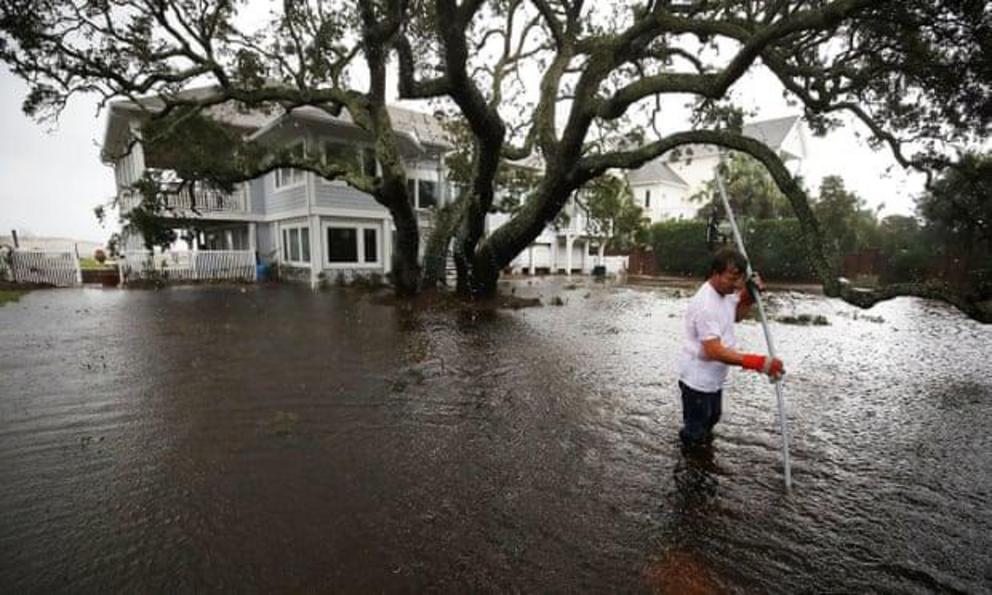Carolinas face catastrophic flooding as Florence breaks rainfall records
Tropical storm Florence moved slowly down the Carolina coast on Saturday, as officials forecast catastrophic flooding in the region and said at least 11 people had been killed by the giant weather system that is set to plague the area for days ahead.
The storm battered the coastline throughout Friday and Saturday with hurricane-force winds and as much as 2ft (60cm) of rain in some areas of North Carolina, breaking state records. With many areas already flooded by seawater, forecasts warned of a period of extensive flooding around the region’s winding network of rivers and creeks.
North Carolina’s governor, Roy Cooper, labelled the storm “an uninvited brute who doesn’t want to leave”. He added, with reference to the storm’s glacial 2mph progress: “We know we’re in for a long haul here. But I think we’re ready.”
The White House declared a major disaster in the state and said Donald Trump would visit storm-affected areas next week.
In New Bern, a city that backs on to the Neuse river in North Carolina, rescue operations continued on Saturday as significant flooding destroyed homes and some of the city’s historic colonial-era statues. More than 360 people were rescued from the flooding by crews in boats, some flown in from New York and other areas of the US.
Florence knocked out power to close to a million households in the Carolinas, with some areas not expecting to regain electricity for days.
As the storm hovered north of Myrtle Beach in South Carolina, residents in the city of Conway, a few miles from the storm’s eye, worried that the Waccamaw river which surrounds the city would soon burst its banks.
By Saturday morning a normally tranquil stream known as Crab Tree Swamp was flowing fast and was just a foot from engulfing a bridge which provides north-south access to Conway. David Hudson, a 29-year-old road construction worker who lives in Conway, had stopped his car on the bridge to film the water flow.
“I’m surprised this is that high,” Hudson said. “There’s usually walking trails down here. They’re underwater now.
“In about four days when all the water comes down from North Carolina, that’s when we’re going to have a problem.”

